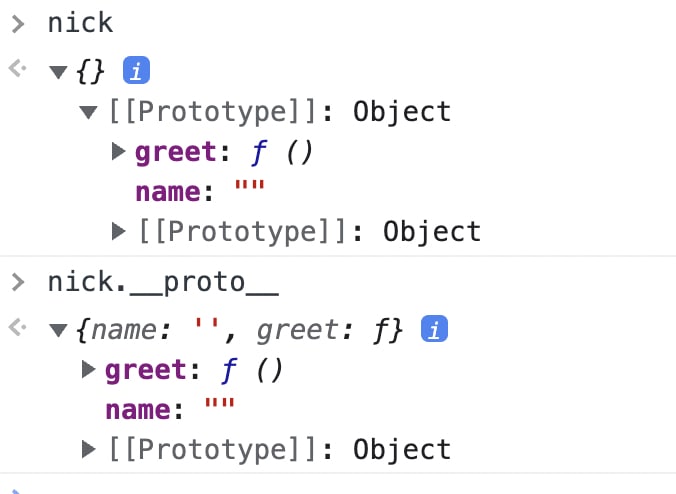important Interview question for a Javascript developer
Prototypal inheritance is a fundamental concept in JavaScript that allows objects to inherit properties and methods from a parent object. In this blog post, we will explore how prototypal inheritance works in JavaScript with some examples. Kindly visit my previous blog to understand more about Prototypes and Prototype chaining before reading further.
At the heart of prototypal inheritance is the concept of a prototype, which is an object that serves as a blueprint for creating other objects. Every object in JavaScript has a prototype, which can be accessed using the __proto__ property.
Let's start with a simple example. Suppose we have a Person object that has a name property and a greet() method.
let Student = {
name: "",
greet: function() {
console.log(`Hello, my name is ${this.name}.`);
}
};
Now, we want to create a nick object that inherits from the Student object and has an additional grade property. We can do this by creating a new object and setting its prototype to be the Student object.
let nick = Object.create(Student);
nick.grade = "";
As you can see in the below image, the nick object's __proto__ property contains the properties of Student object. This means that nick object has inherited the properties from its parent Student object.
Now, let's update the name and grade property of nick object.
nick.name = "Nick";
nick.grade = "90%";
We can call the greet() method on the nick object, which will use the name property inherited from the Student object.
nick.greet(); // Output: Hello, my name is Nick.
We can also add a study() method to the Student object.
Student.study = function() {
console.log(`I am studying for my ${this.grade} grade.`);
};
Now, we can call the study() method on the nick object.
nick.study(); //Output: I am studying for my 90% grade.
In summary, prototypal inheritance in Javascript is a powerful feature that allows objects to inherit properties and methods from a parent object. By setting an object's prototype to another object, we can create a hierarchy of objects that share common properties and methods.




Top comments (0)